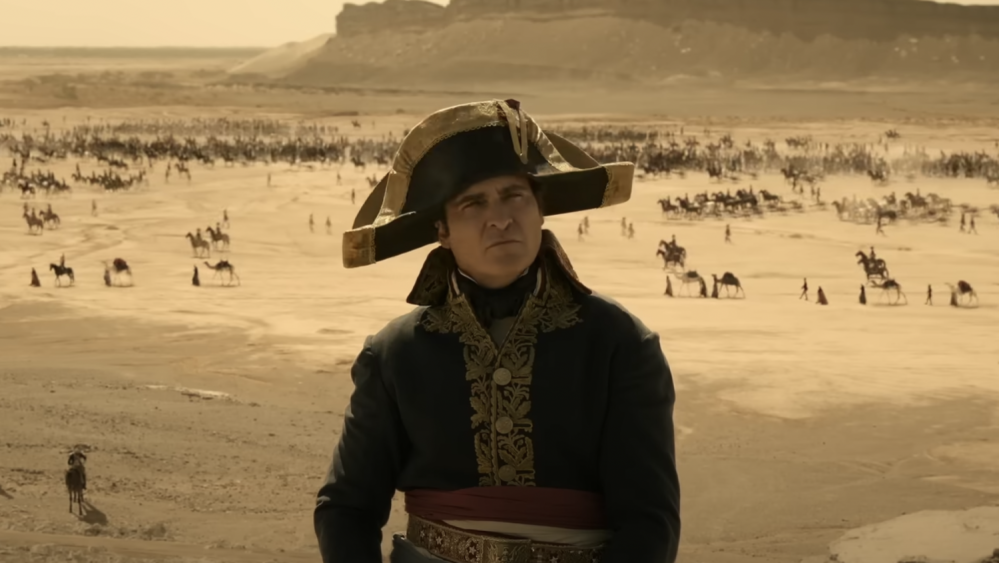- Concentration of Force
One of Napoleon’s core strategies was how to use concentration of force to strike a decisive blow that won the battle. Here’s how he implemented it:
- Rapid Movement and Surprise: Napoleon was known for moving his armies quickly and unexpectedly, allowing him to concentrate his forces before the enemy could effectively respond. This speed and element of surprise were crucial in achieving numerical superiority at the critical point of engagement.
- Central Position Strategy: By positioning his forces centrally relative to the enemy, Napoleon could move his troops to where they were needed most. This allowed him to concentrate force against portions of the enemy line, often leading to the defeat of larger armies by attacking them in segments.
- Use of Reserves: Napoleon skillfully held back a portion of his force as a reserve. He would commit these troops at the crucial moment to tip the balance of a battle. This strategic reserve could be used to exploit weaknesses or reinforce strengths, concentrating force where it was most effective.
- Innovative Corps System: He organized his army into self-contained corps, each with its own infantry, cavalry, and artillery. This system allowed for greater flexibility and rapid concentration of force, as each corps could operate independently but come together for a decisive battle.
- Decisive Action: Once he concentrated his forces, Napoleon acted decisively, using the concentrated force to break through the enemy lines, disrupt their formation, and cause chaos in their ranks.
- Psychological Impact: The sudden appearance of a concentrated and overwhelming force often had a significant psychological impact on the enemy, leading to a breakdown in morale and command.
Napoleon’s ability to concentrate force effectively allowed him to win numerous battles against often numerically superior enemies. His strategies continue to be studied and admired for their innovative and effective use of concentration of force.
This can be applied to business in many ways:
Internally
Often business managers will focus on growing multiple parts of the business at the same time. This kind of multi-tasking can be a mistake because usually there is one or two key areas that are most important. Instead of focusing on ten things at once, it can be better to focus only on one most important thing and get that solved. The theory of constraints is one that a business grows up to its weakest link.

So by focusing on solving that critical point is where we are going to see the biggest growth. It’s can also be applied not just as a manager but to utilise the resources of the team onto that critical point. Enabling each person to be able to work on multiple things is an advantage for this.
In order to do this, it’s critical to understand the business and to understand where the most important part is, to recognise that focus is by nature a laser and should be focused. To then organise around that.
- Where is the most important part? That can have the biggest returns?
We can use the resources of the team in problem solving and their energies and force in driving the solution.
It also means that other less important areas, or less important problems shouldn’t be focused on while that main thing is solved.
Externally
Where to concentrate force externally?
The same can be applied externally in the same way that Napoleon did on the battlefield. Which are the critical areas to focus troops. What are the key markets to invade or win market share, and how to approach those key markets. Eg., one city, and one platform first.
What are the actions or platforms that will 10x with minimum effort? We can start by exploring on multiple platforms, and then double down on that one successful platform.
For me, I think that podcasts is one area that can see big growth.
Leadership Presence
Wherever Napoleon was, is where the army would do best. He accompanied his troops to give moral boosts. Showing up with team at critical places and points is important.
Further Reading:
https://www.forbes.com/sites/davidcarlin/2019/09/30/learn-napoleons-secret-to-success-stop-multitasking/?sh=4ad9be4913e6
In the 1960s, Lanchester’s laws were popularised by the business consultant Nobuo Taoka and found favour with a segment of the Japanese business community.[4] The laws were used to formulate plans and strategies to attack market share. The “Canon–Xerox copier battle” in the UK, for example, reads like a classic people’s war campaign. In this case, the laws supported Canon’s establishment of a “revolutionary base area” by concentrating resources on a single geographical area until dominance could be achieved, in this case in Scotland. After this, they carefully defined regions to be individually attacked again with a more focused allocation of resources. The sales and distribution forces built up to support these regions in turn were used in the final “determined push in London with a numerically larger salesforce”.
